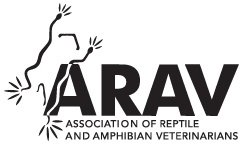Morphological Description of Spindly Leg Syndrome in Golden Mantella (Mantella aurantiaca) at the Smithsonian National Zoological Park

Spindly leg syndrome is first clinically noticeable at Gosner stage 37.

Rear limbs are stiff and provide limited mobility.

Toes begin to develop but limbs remain small and stiff.

Absence of forelimbs upon reaching metamorphosis.

Small, stiff, rear-facing forelimbs render the froglet unable to prop itself up.

Both forelimbs emerging from the left. The thin forelimbs best illustrate the term spindly leg.

Tadpole begins tail absorption with no rear limb growth and no forelimb emergence.

A representative of normal growth in a metamorph.

SLS classification scale for tadpoles and metamorphs. A value of 5 represents the earliest detectable Gosner (1960) developmental stage at which SLS occurs, whereas 0 represents no clinical signs of SLS. R = rear limb, F = forelimb. *Continued development up to tail resorption (stages 44–46) may occur while limbs remain stunted at this stage, although most will perish before reaching this point. **Most metamorphs are unable or struggle to hold head above water or climb out of water, and they may not be able to pursue prey. High instances of drowning occur at this stage.

An illustrated SLS classification scale, following descriptions from Figure 9.



